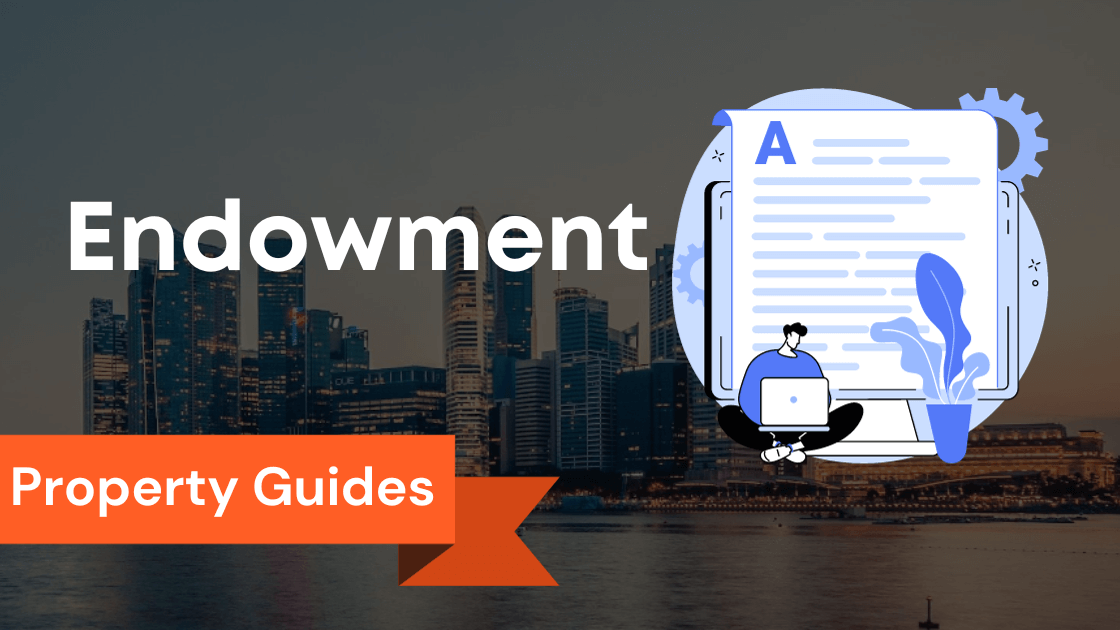
What is Encroachment?
Encroachment refers to the unauthorized and unlawful intrusion or trespass onto someone else’s property.
It is a term commonly used in property law to describe situations where a person or entity extends beyond their legal boundaries and interferes with the rights of another.
Encroachment can occur physically, such as an extension of a building onto a neighboring property, or non-physically, like noise or pollution that disrupts the peaceful enjoyment of a property.
Definition of Encroachment
Encroachment is defined as an act or instance of encroaching, which means advancing beyond accepted limits or boundaries gradually.
In legal terms, it refers to the unauthorized invasion of another person’s property rights.
The word “encroachment” is often used interchangeably with terms like intrusion, trespass, easement, or encroach.
Types of Encroachment
There are various types of encroachment, depending on the nature and extent of the unlawful intrusion.
Examples include structural encroachment, where a building or structure extends into a neighboring property, and encroachment by cattle, where animals roam onto someone else’s land.
These examples highlight how encroachment can occur both in urban and rural settings.
Legal Implications of Encroachment
Encroachment can have profound legal implications for both the encroacher and the affected property owner.
The rights of the property owner may be infringed upon, causing disputes and conflicts that could escalate to court proceedings.
In such cases, the affected property owner may seek legal remedies, including obtaining a writ for encroachment or asserting their property rights.
Property owners need to be aware of the laws and regulations governing encroachment in their jurisdiction.
Seeking legal advice and understanding one’s rights and responsibilities can help prevent and resolve encroachment issues.
Furthermore, potential buyers and sellers should conduct thorough due diligence to identify any existing or potential encroachments on a property before entering into transactions.
http://www.youtube.com/watch?v=o03KqJwWAx8
Encroachment poses a threat not only to individual property rights but also to the overall integrity of communities and their development.
Maintaining boundaries, respecting property rights, and resolving encroachment disputes fairly and legally are essential for a harmonious society.
Key Takeaways
- Definition of Encroachment: Encroachment is the unauthorized intrusion onto someone else’s property, either physically or non-physically, disrupting property rights.
- Types of Encroachment: Various types include structural encroachment (building extending into neighboring property) and encroachment by cattle (livestock straying onto others’ land).
- Legal Implications: Encroachment can lead to legal disputes, where affected property owners may seek remedies, such as a writ for encroachment.
- Importance of Awareness: Property owners must be aware of local laws to prevent and resolve encroachment issues and conduct due diligence before property transactions.
- Benefits of Branding: Branding helps distinguish your business from competitors, showcase values, and improve recognition, fostering trust and influencing customer engagement.
- Identifying Encroachment Signs: Signs include physical encroachments like fences extending beyond boundaries, unauthorized structures, or disputes over property limits.
- Checking for Encroachment: Review property documents, consult professionals, observe physical indicators, seek legal advice, and know local regulations to identify encroachments.
- Resolving Encroachment: Options include negotiation, mediation, legal action, involving associations, reporting to authorities, and proactive measures.
- Encroachment in Singapore: Singapore has laws governing encroachment, and common types include structural encroachment and encroachment by cattle.
- Preventing Encroachment: Knowing property boundaries, seeking professional guidance for changes, and proactive land-use planning are crucial in preventing encroachment and maintaining property rights.
How to Brand Your Business
Introduction
As a savvy entrepreneur or marketer, I would like to know what I can do to differentiate my brand from an endlessly long list of cutthroat competitors.
The short answer is branding!
Whether you are actively managing your brand identity or not, it exists.
And the chances of coming out as the ideal choice for your potential clients rests on how solid and reliable your brand is.
Creating a logo and that catchy slogan isn’t enough, but it’s just the beginning.
To stand out, you need to go beyond these and include essential elements that define your business several years ahead.
Why is it important to brand your business?
Regardless of size, organizations of all kinds need to invest in branding to stay relevant.
If you are still wondering why you should brand your business, here are some benefits you stand to gain.
Distinguish your business from competitors
- Be Unique: With the myriad of companies delivering similar services or products, standing out can be challenging. That’s where branding comes in.
- Have Values: Your values, story, brand promise, and other assets provide avenues through which you can showcase your uniqueness. Leveraging these to create a point of difference could set you apart from your competitors.
Become more recognizable
Get Recognized: Another benefit of investing in a consistent branding effort is to make your brand more memorable.
When customers can identify your company based on physical, visual, and auditory elements, it breeds familiarity.
This fosters trust, which 81% of customers rely on to make a buying decision.
Brand recognition also influences how customers recall and engage with your content, emails, or ads.
http://www.youtube.com/watch?v=516UWexYssk
Here’s a table to recap branding benefits:
Benefit Explanation
Distinguish your business from competitors – Being unique: Branding helps you stand out among the competition by showcasing your distinct values, story, brand promise, and other assets.
– Having values: Leveraging your unique aspects can create a point of difference that sets you apart from competitors.
Become more recognizable – Get recognized: Investing in consistent branding efforts makes your brand more memorable.
– Familiarity breeds trust: When customers can quickly identify your company through physical, visual, and auditory elements, it fosters trust and influences their buying decisions.
– Influence engagement: Brand recognition can also affect how customers recall and engage with your content, emails, or ads.
How to Identify Encroachment

Common signs of encroachment
Encroachment refers to the unauthorized use or trespassing on someone else’s property.
Here are some common signs that indicate possible encroachment:
- Example sentences: Encroachment can occur when a neighbor places their fence or extends their building beyond their property boundaries without permission.
- Usage of the word: Encroachment is often used to describe actions that infringe on the rights or limits of another person’s land or property.
- Expressed in the examples: Examples of encroachment include encroaching tree roots damaging a neighbor’s fence, a driveway extending beyond its designated area, or a structure crossing over into someone else’s land.
- Reaction to encroachment: Property owners often react to encroachment by seeking legal remedies, such as filing lawsuits or negotiating boundary adjustments.
- Trends of encroachment: Encroachment can be more common in densely populated areas or when property boundaries are not clearly defined or disputed.
How to check for encroachment on your property
To determine if there is encroachment on your property, consider the following steps:
- Review property documents: Examine your property documents, including surveys, to understand the legal boundaries of your property.
- Consult with professionals: Engage a surveyor or land expert to help identify any encroachments and assess the impact on your property rights.
- Observe physical indicators: Look for signs of encroachment on the ground, such as fences, structures, or landscaping that extend beyond your property boundaries.
- Seek legal advice: If you suspect an encroachment, consult with a lawyer experienced in property law to understand your rights and options.
What to do if you think there is encroachment on your property
If you believe there is encroachment on your property, take the following steps:
- Act promptly: Address encroachment issues as soon as possible to protect your property rights and prevent further disputes.
- Document evidence: Gather evidence of the encroachment, including photographs and written records, to support your claim.
- Communicate with the encroaching party: Notify the person or entity responsible for the encroachment and seek to resolve the issue amicably.
- Protect your property: If negotiations fail, consult with a lawyer to explore legal options, such as filing a lawsuit or seeking an injunction to remove the encroachment.
- Know your rights: Familiarize yourself with local laws and regulations regarding encroachment to understand your legal options and protections as a property owner.
Resolving Encroachment Disputes: Easement Sign

Negotiation and mediation
When faced with an encroachment dispute in Singapore, negotiation and mediation can often be the most effective means of resolution.
Encroachment refers to the unauthorized use or occupation of another person’s property beyond the legal boundaries.
The parties involved should carry out discussions to find a mutually acceptable solution.
Mediation facilitates these negotiations, allowing the parties to express their concerns and explore potential compromises.
It is essential to press the importance of understanding property boundaries and limits to ensure a fair resolution.
Legal action
In some cases, negotiation and mediation may fail to be successful or practical.
If all else fails, legal action can be pursued to resolve encroachment disputes.
Property owners have the right to protect their property, and in Singapore, there are legal avenues available to address encroachment.
This can include filing a writ for encroachment, which is a legal document that alerts the court to the encroachment and seeks a resolution.
It is important to consult legal professionals who specialize in property rights and encroachment laws.
Other options for resolving encroachment disputes
Aside from negotiation, mediation, and legal action, there are other options available to resolve encroachment disputes in Singapore.
Property owners can seek assistance from relevant associations like homeowners’ associations or neighborhood committees.
These associations may have knowledge and experience in handling encroachment issues and can provide guidance and support.
Unauthorized encroachments can be reported to the relevant authorities, such as the Land Surveyor’s Office, to request enforcement and order the removal or rectification of the encroachment.
It is essential to reflect on the examples of encroachment and learn from them to prevent future disputes.
Additionally, being proactive and reacting promptly to encroachment can help minimize conflicts.
Overall, when faced with an encroachment dispute, it is crucial to explore various options for resolution.
Negotiation, mediation, legal action, and other avenues can help protect property rights and find fair solutions to encroachment issues in Singapore.
Encroachment in Singapore: Word Dictionary

Singapore, known for its strict laws and regulations, also has rules in place to address encroachment issues.
Encroachment occurs when a property extends beyond its legal boundaries and enters into another property.
This can lead to disputes between neighbors and can cause legal complications.
Here are some key points to know about encroachment in Singapore.
Singapore laws on encroachment
In Singapore, the laws on encroachment are governed by various statutes and regulations.
The most recent legislation on this matter is the Land Titles (Strata) Act, which was enacted in 2019.
This act provides rules and guidelines for the management and maintenance of strata-titled properties.
If you suspect an encroachment on your property, you can make a public records request to obtain information about the ownership and boundaries of neighboring properties.
This can help in identifying the extent of the encroachment and facilitate resolution.
It’s important to note that Singapore is a tribal society where communal living is common.
However, the legal property owner still holds the rights to their property and is entitled to protect it from encroachment.
Common types of encroachment in Singapore
Various types of encroachment can exist in Singapore.
According to the Cambridge Dictionary editors, the most common styles include structural encroachment and encroachment by cattle.
Structural encroachment occurs when a building or structure extends beyond its legal boundaries onto another property.
This can create complications in terms of ownership and usage rights.
Encroachment by cattle refers to situations where livestock or animals stray onto private property, causing damage and disruption.
How to deal with encroachment in Singapore
If you find yourself dealing with encroachment onto your property, there are several steps you can take to address the issue.
First, it’s essential to clarify the boundaries and extent of the encroachment.
This can be done through surveys or professional assessments.
Next, it’s advisable to attempt negotiation and mediation with the party responsible for the encroachment.
This can help resolve the issue amicably and avoid legal complications.
If negotiation fails, legal action may be necessary.
Singapore has a well-established legal system that provides avenues for resolving property disputes.
In conclusion, encroachment is a severe issue in Singapore, and it’s essential to understand the laws and regulations surrounding it.
By being aware of your rights and taking the necessary steps, you can effectively deal with encroachment and protect your property.
Preventing Encroachment: Encroach Sentence

When it comes to property and land ownership, one of the most important aspects you need to consider is preventing encroachment.
Encroachment refers to the unauthorized use or occupation of someone else’s property or the infringement upon someone else’s property rights.
It’s crucial to take proactive measures to prevent or limit encroachment to protect your property and rights.
Know your property boundaries
To prevent encroachment, it’s essential to have a clear understanding of your property boundaries.
Familiarize yourself with your property lines by reviewing the property survey or consulting the appropriate authorities.
Ensure that the boundaries are clearly marked and well-maintained, such as using visible markers or fences, to prevent others from unintentionally crossing onto your property.
Get professional help when making changes to your property
Making changes to your property, especially in areas with increasing rural populations, can be a delicate matter.
It’s essential to be aware of local laws and regulations that govern property boundaries and limits.
Before undertaking any significant modifications or developments, consult with a professional, such as a land surveyor or land-use planner.
They can help ensure that your proposed changes comply with the necessary rules and regulations, thus minimizing the risk of encroachment.
Proactive land-use planning
Another effective way to prevent encroachment is through proactive land-use planning.
This involves understanding the zoning regulations and land-use policies in your area and working within those guidelines.
By being aware of the permitted land uses and potential restrictions, you can plan your property developments strategically and minimize the chances of encroaching on neighboring properties.
Additionally, participating in local planning discussions and engaging with your community can help you stay informed about any proposed changes or developments that may impact your property.
In summary, preventing encroachment requires careful attention and proactive measures.
Knowing your property boundaries, seeking professional help when making changes, and engaging in proactive land-use planning are essential steps to protect your property and rights.
By being vigilant and aggressive, you can maintain a clear and respectful boundary with your neighbors and minimize any potential conflicts or legal issues related to encroachment.
Conclusion
Encroachment Singapore Conclusion
In conclusion, encroachment is a severe issue in Singapore that has both legal and environmental implications.
It is essential to have a clear understanding of encroachment and its definition to grasp the gravity of the problem.
Encroachment refers to the unauthorized occupation or intrusion onto someone else’s property or rights.
It can occur in various forms, such as encroachment on public land, private property, or even intellectual property.
While some cases of encroachment may seem benign, it is important not to downplay the adverse effects it can have.
Encroachments can disrupt the balance of ecosystems, harm wildlife habitats, and hinder the development of infrastructure projects.
They can also lead to conflicts and disputes between individuals, thesaurus, humans, power, sense, businesses, and the government.
To address encroachment effectively, the government must enforce strict regulations and penalties.
Encroachers should be held accountable for their actions and made aware of the consequences.
Additionally, public education campaigns can help raise awareness about the negative impacts of encroachment and encourage responsible practices.
It is important to note that the examples provided in this article do not represent an exhaustive list of encroachment scenarios in Singapore.
Encroachment cases can vary in complexity and severity, requiring careful examination and consideration.
Encroachment issues often involve a delicate balance between private property rights and the government’s duty to protect public resources.
Finding the right balance can be challenging, but it is crucial for Singapore’s long-term sustainability and harmony.
As with any article, it is essential to verify information from reliable sources and consult legal experts for specific advice.
The opinions expressed in this article are based on the author’s research and understanding of the topic. Encroachment from the Cambridge examples do not represent the opinion of political federal.
They may not represent the official position of the Singapore government or other relevant authorities.
If you have any feedback or additional information regarding encroachment in Singapore, please feel free to send us your input.
It is through collective efforts and continuous improvement that we can effectively address the issue of encroachment and protect the precious space and natural resources of Singapore.
Frequently Asked Questions
What is encroachment?
Encroachment is the act of intruding or trespassing on someone else’s property or rights.
Can you give an example of encroachment?
An example of an encroachment is when a neighbor builds a fence that extends beyond their property line and onto their neighbor’s land.
How does encroachment relate to legal matters?
Encroachment is a legal issue because it involves the violation of property rights.
It can result in disputes and legal actions between individuals or entities.
Where can I browse for the definition of encroachment?
You can browse for the definition of encroachment in an English dictionary or online resources that provide descriptions of legal terms.
Is there a synonym for encroachment?
Yes, a synonym for encroachment is trespass.
How can I find the translation of encroachment in another language?
You can use an online translation service or consult a multilingual dictionary to find the translation of encroachment in other languages.
What is the source of the term "encroachment"?
The term “encroachment” originated from the English language.
Can you define encroachment?
Encroachment is defined as the unauthorized intrusion or occupation of another person’s property or rights.
What is the meaning of encroachment?
The meaning of encroachment is the act or process of gradually intruding upon or taking over someone else’s property or rights.
Where can I find the English definition of encroachment?
The English definition of encroachment can be found in English dictionaries or legal dictionaries.












